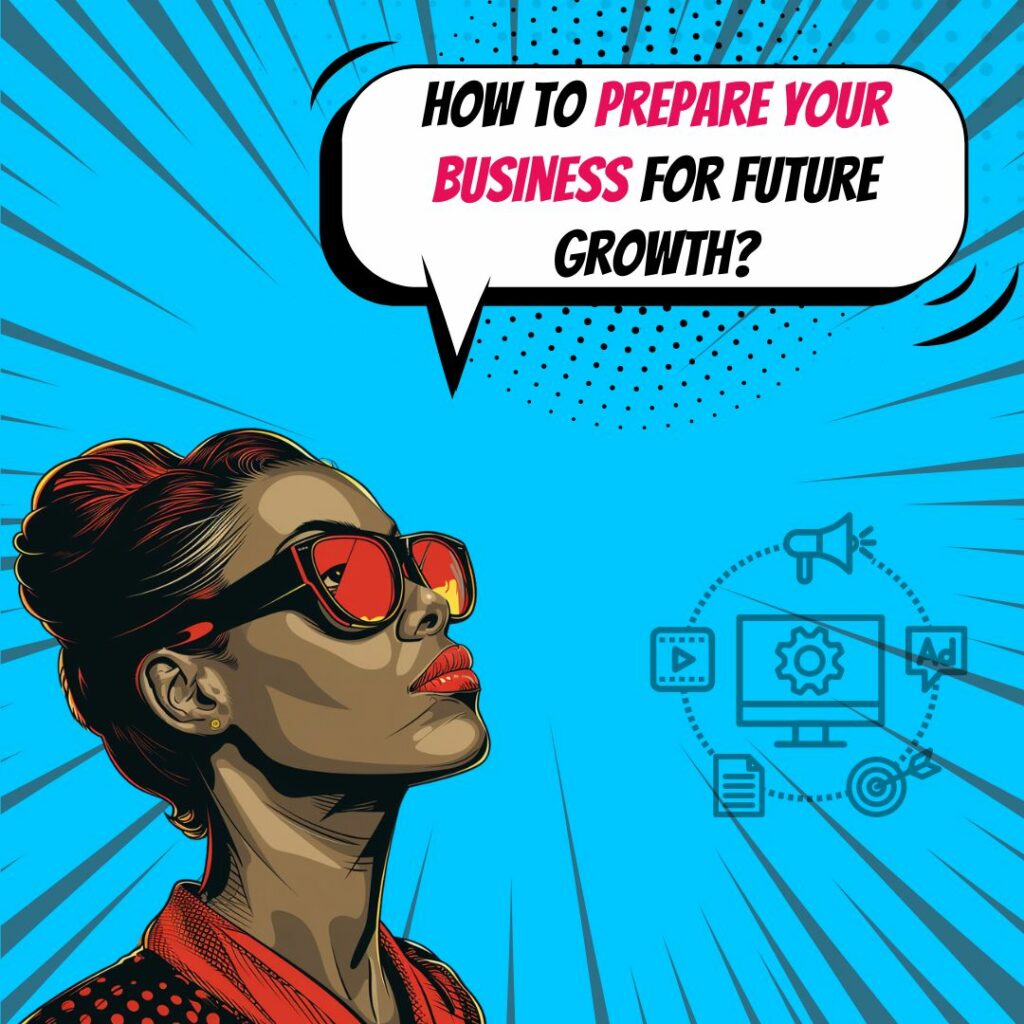Key Takeaways
✅ Establish a Clear Value Proposition and Ideal Customer: Defining your business's unique value and understanding your target audience are the first steps to standing out in a crowded market. With 72% of companies focusing on optimizing the customer experience, aligning your value proposition with your ideal customer's needs is crucial. Create detailed customer personas as a guide for your marketing and product development strategies to increase relevancy and engagement.
✅ Develop a Comprehensive Growth Plan: A well-rounded growth plan is essential, covering everything from revenue streams to talent maximization. Businesses that plan for growth are more likely to succeed, with statistics showing that a coherent strategy can improve growth rates by up to 30%. Include analyses of competitors, market trends, and internal capabilities to ensure balanced, informed strategies capable of adapting to change.
✅ Focus on Customer Service and Employee Development: Stellar customer service and a skilled, motivated team are your best assets for scalable growth. Companies that prioritize customer service see 4-8% higher revenues, and investing in employee development leads to increased innovation, productivity, and retention. Implement feedback loops and continuous training to cultivate a culture that champions excellence and adaptability.
 Introduction
Introduction
Why is preparing your business for future growth not just important, but absolutely essential in today's fast-paced market? Amidst evolving consumer demands and technological advancements, laying a solid foundation for growth ensures your business not only survives but thrives.
This article dives deep into the heart of business growth and innovation, uncovering not just the 'what' but the 'how' of scaling your operations, identifying new revenue opportunities, and building a resilient framework against market fluctuations. With industries witnessing an average growth rate of 2.5% annually, understanding how to effectively position your business can mean the difference between merely surviving and robustly flourishing.
We’re lifting the veil on modern strategies, cutting-edge trends, and actionable tips to maximize your business's potential for revenue, Return on Advertising Spend (ROAS), and Return on Investment (ROI). Stay with us as we explore groundbreaking information that will equip you with the tools needed for sustainable success and the promise of actionable insights to catapult your business into its next growth phase.
Top Statistics
| Statistic | Insight |
|---|---|
| Small Business Growth Rate: Small businesses in the U.S. have an average growth rate of between 7% and 8% per year. | This shows the vital role small businesses play in the economy, demonstrating consistent expansion and offering new opportunities for employment and innovation. |
| Business Applications: Over 5 million new business applications have been filed annually since 2020, with 1.75 million applications filed as of April 2024. | An indicator of entrepreneurial spirit and economic resilience, suggesting a fertile environment for startups and expansions. |
| Minority-Owned Businesses: Minority-owned businesses saw rapid growth, with Black- and Latino-owned businesses growing significantly between 2019 and 2022. | Highlights the increasing diversity in the business landscape and the growing importance of supporting minority entrepreneurs. |
| Women-Owned Businesses: The growth rate of women-owned businesses was 94% greater than their male counterparts between 2019 and 2023. | This exceptional growth rate underscores the emerging power and influence of female entrepreneurs in the market. |
| Supply Chain Issues: 73% of small-business owners have felt the impacts of supply chain issues to some extent. | This statistic is a call to action for businesses to innovate and adapt their supply chain management strategies to be more resilient against disruptions. |
Understanding the Importance of a Growth Strategy
For small businesses looking to carve out their niche in today's competitive market, crafting a growth strategy is not just beneficial; it's vital. It serves as the roadmap for long-term success and a beacon during tough times. By identifying opportunities for expansion, detailing the results you want, and setting SMART goals, a thoughtfully outlined growth plan turns ambitions into actionable steps. Consider this: only about half of small businesses survive past the five-year mark, according to the Small Business Administration. With a solid growth strategy, your business could be part of the thriving 50%.
Identifying Growth Opportunities
How do you pinpoint where your business can grow? It starts with a deep dive into every facet of your operations and setting realistic goals. Whether it's venturing into new markets, opening another location, innovating your product line, or enhancing your online presence, each potential path to growth requires careful consideration. Interestingly, a study by the National Small Business Association found that 73% of small businesses used an online platform to help them expand. This underscores the importance of not just identifying growth opportunities but being strategic and selective about which ones to pursue.
Creating a Growth COOKIE
Mapping out a growth strategy might seem daunting, but it can be streamlined with a template that organizes your thoughts and expectations. Include critical sections like an executive summary, a deep dive into your company and offerings, a robust marketing plan, and a comprehensive financial analysis. This organized approach ensures you've considered all angles—market needs, operational capabilities, financial projections, and more. Think of it as constructing the blueprint of your company's future where every detail, big or small, aligns with your growth ambitions.
Setting SMART Goals and Timelines
Without SMART goals and timelines, a growth strategy is just a wish list. These goals, specific, measurable, achievable, relevant, and time-bound, break down your ambitious growth plan into achievable steps. A timeline adds structure, creating checkpoints for progress and opportunities to adjust your strategy based on real-world results and feedback. It's like navigating through a city with a well-planned route instead of wandering aimlessly, hoping to reach your destination.
Researching and Funding Growth
Successful growth is often preceded by meticulous research and planning. Understanding your target market, competition, and previous growth trends lays the groundwork for informed expansion. Equally important is securing the necessary funding, whether through loans, investment, or revenue reinvestment. Did you know that securing financing is one of the most significant hurdles small businesses face during expansion according to a survey by Guidant Financial? This underscores the importance of a clear, compelling pitch to potential lenders or investors, complete with detailed financial plans and projections.
Implementing and Refining the Growth Strategy
Bringing your growth plan to life involves more than just following a set of steps; it requires continuous refinement. With the assistance of business plan software or templates, you can keep your strategy aligned with the current market conditions. Regularly reviewing and tweaking your plan based on outcomes and feedback ensures your business remains responsive and agile. Remember, building a successful business is a marathon, not a sprint. Consulting with peers who've walked the path before can provide invaluable insights and help steer your strategy towards success.
AI Marketing Engineers Recommendation
Recommendation 1: Leverage Big Data and Analytics for Customer Insights. In an era where understanding your customer has never been more critical, using big data and analytics offers a treasure trove of insights. Did you know that businesses using analytics have seen a 6% increase in profits over a year? By deeply diving into customer behavior, preferences, and trends, your business can tailor products and marketing strategies that meet their needs, sometimes even before they realize they need it. Start with collecting data from customer interactions across all touchpoints, then use analytics tools to spot patterns and preferences.
Recommendation 2: Embrace the Power of Personalization in Marketing Strategies. Recent studies show that personalized email campaigns receive 29% higher email open rates and 41% higher click rates than generic emails. In the flood of information that consumers navigate daily, personalized content can help your message stand out. Use data from customer interactions to create personalized marketing messages. It's not just about adding a name to an email anymore; it's about tailoring the content, offers, and even the timing of the message to match the customer's history and preferences.
Recommendation 3: Utilize AI and Machine Learning for Predictive Analysis. The future is here with AI and machine learning technologies offering ways to predict market trends and customer behavior like never before. These technologies can analyze vast amounts of data in real-time, providing businesses with actionable insights that can drive decision-making and strategy. Implementing tools like predictive analytics can help forecast demand, identify potential new markets, or pinpoint operational inefficiencies. According to a survey, 58% of businesses using AI and machine learning have seen improvements in their product and service development times.
Conclusion
In the journey of transforming a vision into a thriving enterprise, preparing your business for future growth stands as a crucial milestone. This isn't just about dreaming big; it's about adopting a concrete growth strategy that empowers small businesses to navigate the unpredictable waves of the market with confidence and clear direction. By identifying growth opportunities—ranging from tapping into new markets to leveraging digital platforms—and meticulously crafting a growth plan, businesses can set a robust foundation for scalable success.
However, recognizing an opportunity is just the beginning. The real magic lies in transforming these opportunities into actionable strategies through meticulous planning, setting SMART goals, and establishing realistic timelines. These steps are not just milestones but rather checkpoints that ensure your growth journey is on the right path. Moreover, understanding the nuances of funding expansion and the dynamics of market competition are indispensable in fine-tuning your growth plan to align with both your ambitions and market realities.
As we've unraveled the layers of preparing your business for future scalability, it's evident that the blend of strategic foresight, operational planning, and continuous refinement forms the backbone of sustainable growth. But remember, a strategy is only as good as its execution. Therefore, embracing adaptability, fostering innovation, and maintaining a laser focus on your core objectives will be pivotal in steering your business towards its envisioned future.
Let this not just be a read but a call to action to embark on your growth planning with renewed vigor and strategic insight. After all, in the ever-evolving tapestry of the business world, positioning your business for growth is not just an option but a necessity for enduring success.
FAQs
Question 1: What are the key phases of business growth?
Answer: Think of it like this: businesses grow up just like people do. First, there's infancy, where the owner does pretty much everything. Then comes adolescence, where the owner starts to bring on help but finds managing tough. Finally, in maturity, the owner gets the hang of things, mastering business knowledge and leadership skills.
Question 2: Why is continuous growth important?
Answer: Continuous growth is like the water businesses swim in—it's essential for survival. It opens doors for employees to grow, attracts the best talent, and, importantly, fills the pockets of investors.
Question 3: What are the essential elements of a growth mindset?
Answer: Imagine always reaching for the next star—innovating, being efficient, adapting swiftly, making decisions based on data, and always having an eye on the far horizon. That's a growth mindset.
Question 4: How do you decide on sales objectives?
Answer: It's all about focusing on the gold in front of you—nurture existing leads, deepen ties with current clients, and ensure everyone's so happy they can't help but talk about you.
Question 5: What are the critical questions for sales professionals?
Answer: Sales pros often ponder over how to set smart goals, how to up their prices without scaring folks off, and the secrets to winning over fresh, quality clients.
Question 6: What are the key processes to document for efficiency and scalability?
Answer: It's about getting your ducks in a row—pinpointing which processes are key, making sure they're done the same excellent way every time, and cutting out the steps that just take up time without adding value.
Question 7: How do you ensure profitable growth?
Answer: Aim for the kind of growth that visibly boosts the bottom line. Spend wisely, focusing on slashing waste and anything that slows you down.
Question 8: What are the essential questions to ask about your target niche?
Answer: Who's making the decisions? What's going to grab their attention? How can you talk about your products in a way that lights up their day?
Question 9: How do you create a solid sales strategy?
Answer: It's about loving the ones you're with—take great care of current leads and clients and make such a good impression that they spread the word for you.
Academic References
- Cope, J. (2005). Toward a Dynamic Learning Perspective of Entrepreneurship. Entrepreneurship Theory and Practice, 29(4), 373-397. This article explores the intersection of learning and entrepreneurship, arguing that a dynamic, adaptive approach to learning is key to successful business planning and growth. It emphasizes structured learning processes similar to those in developing business plans, including formal analysis, resource assessment, and continuous progress monitoring.
- Churchill, N.C., & Lewis, V.L. (1983). The Five Stages of Small Business Growth. Harvard Business Review, May-June, 30-50. This seminal study introduces a five-stage model of small-business growth, identifying distinct phases through which a business typically progresses. The authors provide a framework for entrepreneurs to understand these stages, helping them to better navigate the complexities of growth and development. Each stage is accompanied by its own set of challenges and strategic focus areas.












